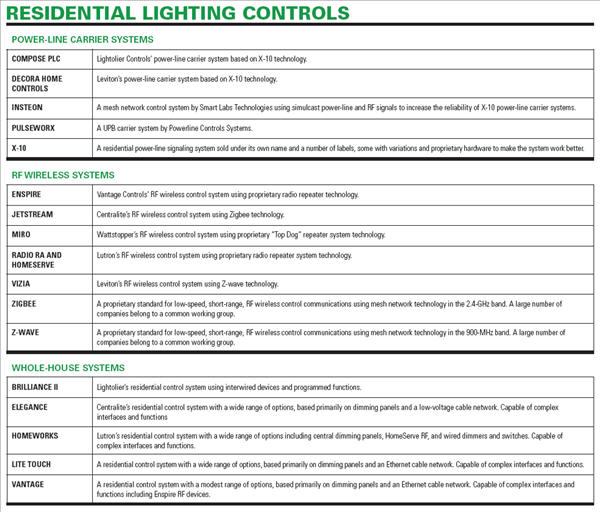When it comes to lighting controls, residential lighting always has been a leader. Largely because of the straightforward control functions associated with homes, the flexibility, ease of use, and reliability of home dimming systems often are better than the best commercial lighting control systems. Long before computer-based systems could manage commercial buildings with advanced dimming functions like scene controls, home systems already were capable of creating whole-house scenes with the push of a button.
Considering the benefits of even a modest level of integration and connectivity, lighting control design should be looked at as a system, not as individual components. As residential lighting systems are planned, controls should be planned, too. This enables informed design and budget choices early enough in the process to allow major construction planning and electrical rough-in. There are three ways to approach residential lighting controls:
SCENE-BASED DESIGN The first step in contemporary controls design is to employ scene controls. In many rooms of a house, there often are more than one group of lights, such as downlights, accent lights, sconces, and a chandelier. A scene is a previously set (“preset”) combination of dimmer settings for each group, designed to achieve a particular atmosphere. Scenes can be chosen by manually adjusting three or four dimmers until the space feels right, but ideally, the pressing of a single button will turn on the lights and fade them to the chosen scene. The four-scene preset controller is the most popular contemporary lighting control system on the market today.
In addition to mood-creating use in dining rooms and kitchens, scene preset controllers are good for home theaters and family rooms with A/V systems. Today’s preset scene controllers “talk” to the home theater controller, and with the push of a button the A/V system is activated, the curtains are closed, and the lights are dimmed to the preferred viewing scene.
The scene preset controller typically is used to control only a single room. To address multiple rooms, a system is required. A discretely located push-button anywhere in the home can activate an array of whole-house scenes including: welcome home, party, security, or panic. Scenes also can be activated by a car transmitter, key fob, alarm system, or home energy-management system.
